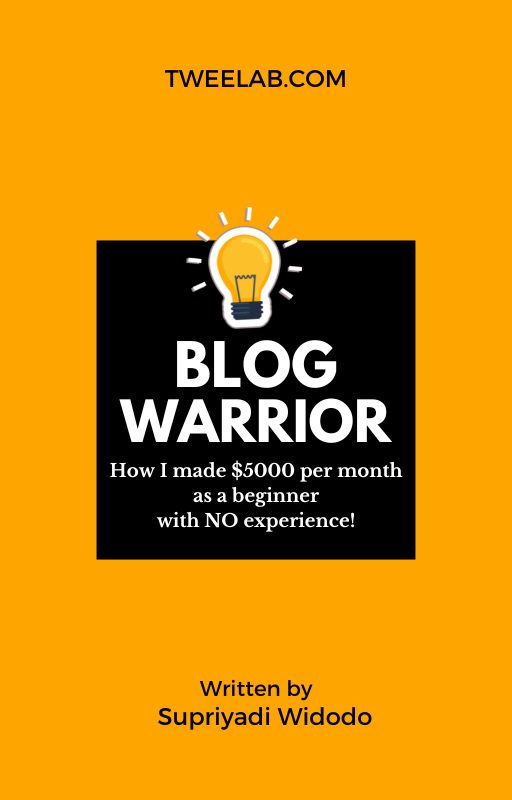Are you finding it difficult to create quality content that engages your audience? Creating compelling content is crucial for any online business or brand. It’s what attracts and retains readers, drives traffic to your website, and ultimately leads to conversions.
Table of Contents
But with so much competition out there, how can you make sure your content stands out from the rest?
In this blog guide, we’ll explore some key strategies for creating quality content that resonates with your target audience. From understanding your audience’s needs and interests to crafting attention-grabbing headlines and using storytelling techniques, we’ll cover everything you need to know about producing top-notch content that keeps readers coming back for more.
So whether you’re a seasoned writer looking to up your game or a newcomer wondering where to start, read on for our expert tips on how to create quality content.
Identifying Your Target Audience

Creating quality content begins with identifying your target audience. Before you start writing, it’s important to analyze demographics and conduct market research to understand who your audience is. This will help you tailor your message so that it resonates with them.
Analyzing demographics involves looking at key characteristics such as age, gender, location, income level, education level, and interests. Understanding these factors can help you create content that speaks directly to your target audience.
For example, if your target audience is predominantly female millennials living in urban areas, then creating content that addresses their specific challenges and interests would be more effective than generic messaging.
Conducting market research involves understanding the needs of your audience beyond just demographic data. You need to know what motivates them, what problems they are trying to solve, and what solutions they are seeking.
By doing this type of research, you can create content that offers real value to your audience and positions you as an expert in your field without being salesy or pushy.
Understanding Your Audience’s Needs And Interests

To create quality content, it is essential to know the audience you are creating for. This means conducting thorough audience research to understand their needs, interests, pain points, and preferences. By doing so, you will gain insight into what type of content they like consuming and how they prefer receiving it.
Once you have a clear understanding of your target audience, the next step is to differentiate your content from that of your competitors. Creating unique and valuable content will help capture your audience’s attention and keep them engaged.
To do this successfully, look at what topics or themes are popular in your industry and think about how you can put a new spin on them.
Incorporating these strategies into your content creation process will lead to higher engagement rates among your target audience.
Remember to always stay current with changing trends in your industry as well as continuously monitor feedback from readers to ensure you are meeting their expectations. With time and effort, you can deliver quality content that resonates with your audience while standing out from the competition.
Crafting Attention-Grabbing Headlines

Are you having trouble getting people to click on your articles? Crafting attention-grabbing headlines is a crucial step in creating quality content.
Your headline is the first thing that potential readers will see, and it needs to be catchy enough to make them want to read more.
One effective way of coming up with great headlines is by analyzing your competitors. Take note of what kind of titles they use and which ones seem to get the most clicks. Don’t copy their exact wording, but use this information as inspiration for your own headlines.
You can also try A/B testing different versions of your title to see which one performs better. When crafting your headline, think about what would make YOU want to click on an article.
Use power words like ‘ultimate,’ ‘surprising,’ or ‘secret’ to pique readers’ interest. Keep it short and sweet – ideally no longer than 65 characters so that it doesn’t get cut off in search results.
By following these tips and putting effort into creating strong headlines, you’ll be well on your way to attracting more readers and boosting engagement with your content.
Using Storytelling Techniques To Engage Readers

Creating an engaging narrative is key when crafting content to engage readers.
Structure your story elements to develop a compelling narrative arc to keep readers interested.
Incorporate audience-specific elements to draw readers in, such as language and themes that they can connect with.
Utilize storytelling techniques that will evoke emotion and encourage readers to take action.
Using suspenseful hooks and cliffhangers will help keep the reader engaged and wanting more.
It’s important for content writers to remember that the quality of the story is what will draw readers in and keep them coming back for more.
Crafting An Engaging Narrative
Exploring emotions is a key factor in crafting an engaging narrative. It’s important to understand the emotional journey that your characters go through and how it relates to the overall plot of your story. By tapping into these emotions, you can create relatable characters that readers will root for throughout their journey.
One way to ensure strong character development is by giving your characters clear motivations and desires. This allows readers to connect with them on a deeper level and become invested in their outcome. Additionally, exploring internal conflicts within your characters adds depth and complexity to their personalities, making them feel more human and relatable.
To truly engage readers, storytelling techniques such as foreshadowing and cliffhangers can be used effectively. These techniques build tension and anticipation, keeping readers hooked until the very end.
By combining emotional exploration with well-crafted characters and effective storytelling techniques, you can create quality content that resonates with audiences long after they’ve finished reading.
Structuring Story Elements
Now that we’ve covered the importance of exploring emotions in crafting an engaging narrative, let’s dive into how structuring story elements can further enhance your storytelling.
Character development and plot progression are crucial components of any successful story, but they must be structured effectively to keep readers invested.
One way to structure character development is through effective dialogue crafting. Each character should have a unique voice and mannerisms that reflect their personality, making them feel more authentic and relatable. Additionally, building up to a climactic moment within the story adds tension and excitement for readers as they anticipate what will happen next.
When it comes to structuring plot progression, foreshadowing and cliffhangers can also be effective techniques. By hinting at future events or ending chapters on suspenseful notes, you keep readers engaged and eager for what’s to come.
Finally, culminating all these elements towards a satisfying climax builds upon reader satisfaction by tying together loose ends while leaving enough open space for interpretation.
By incorporating these storytelling techniques into your writing process with careful consideration of each element’s placement, you’ll create compelling stories that captivate your audience until the very end!
Connecting With Audience
As a writer, it’s essential to connect with your audience by creating empathy and building trust. Your readers need to feel invested in your story, and one way to do that is by crafting relatable characters. By giving them unique voices, personalities, and vulnerabilities, you allow your audience to see themselves within the narrative.
Another effective storytelling technique for connecting with an audience is through the use of emotions. By tapping into universal human experiences such as love, loss, or fear, you create a bond between reader and character. This connection can make even fictional events seem real and emotionally impactful.
Finally, incorporating relevant themes and issues can also help build connections between author and reader. Whether exploring societal concerns or personal struggles, addressing these topics in storytelling creates an opportunity for reflection and discussion among readers.
As writers, we have the power to spark conversation around important subjects while engaging our audiences at the same time.
Incorporating Visuals For Maximum Impact

Now that you have mastered the art of storytelling, it’s time to take your content to the next level by incorporating visuals for maximum impact. Studies show that visual content is more memorable and engaging than plain text alone, so it’s essential to use images and videos in your marketing strategy.
One effective way to incorporate visuals into your content is through infographic design. Infographics are a powerful tool for conveying complex data or information in an easy-to-understand format. By using eye-catching graphics and bold colors, infographics can capture readers’ attention while providing them with valuable insights.
Another popular form of visual content is video marketing. With the rise of social media platforms like TikTok and Instagram Reels, short-form videos have become increasingly popular among consumers.
Creating high-quality videos that showcase your brand’s personality and values can help increase engagement and build trust with potential customers.
By incorporating both infographics and videos into your content strategy, you can create compelling pieces that resonate with your audience on multiple levels. Remember to keep things visually appealing, informative, and relevant to your target market – this will ensure that your content stands out from the crowd and drives results for your business.
Providing Value And Offering Solutions

Creating quality content is essential for any business or brand that wants to establish a strong online presence. One key ingredient in creating valuable content is providing value and offering solutions to your audience’s problems.
This means taking the time to understand their needs, researching competitors, and conducting surveys.
To provide value with your content, you need to focus on what your target audience wants and needs. Start by identifying common pain points or questions they may have related to your industry. Then, create blog posts, videos, social media updates, or other types of content that offer practical tips and solutions.
By doing this, you’ll position yourself as an expert in your field who cares about helping others.
Another way to provide value is by researching your competitors’ content strategies. Take note of what topics they cover frequently and how they approach them. Use this information to develop unique ideas for your own content that fill gaps in the market while still addressing your audience’s concerns.
Conducting surveys can also help you gather insight into what type of content resonates best with your target audience so that you can tailor future pieces accordingly.
Providing value and offering solutions should be at the core of all the content you produce. Remember to always prioritize the needs of your audience over promoting yourself or selling products/services directly.
By focusing on solving their problems through informative and engaging material, you’ll build up trust with potential customers and establish long-term relationships based on mutual respect and understanding.
Consistency And Strategy For Long-Term Success

Having provided value and offered solutions in your content, you are well on your way to creating quality material. However, it takes more than just a one-time effort to achieve long-term success with your audience. Consistency and strategy are key elements that will help you maintain engagement over time.
To begin with, goal setting is an important aspect of any successful content creation strategy. You need to define what you want to achieve with each piece of content and how it fits into your larger business objectives. This can range from increasing brand awareness to generating leads or driving sales. Setting specific goals helps you stay focused and measure the effectiveness of your efforts.
In addition to goal setting, effective time management is crucial for consistent content creation. Whether you’re working alone or as part of a team, creating a publishing schedule that outlines when and where your content will be published can help ensure that deadlines are met and quality standards are maintained. It also allows you to plan ahead for seasonal events or promotions so that your content remains relevant year-round.
By implementing these strategies, you’ll be better equipped to create high-quality content that resonates with your target audience while achieving measurable results.
Remember that consistency is key: by regularly producing valuable content guided by clear goals and strong time management skills, you’ll build credibility within your industry and establish yourself as a go-to resource for information related to your niche market.
Key Takeaways
- Identifying Your Target Audience: Analyze demographics and conduct market research to understand your audience’s characteristics, needs, and motivations. Tailor your content to address their specific challenges and interests.
- Understanding Your Audience’s Needs and Interests: Conduct thorough audience research to gain insights into what type of content your audience prefers and how they like to receive it. Differentiate your content from competitors by putting a new spin on popular topics or themes.
- Crafting Attention-Grabbing Headlines: Create catchy headlines that make readers want to click and read more. Analyze competitors’ headlines for inspiration, use power words, and keep headlines short and impactful.
- Using Storytelling Techniques to Engage Readers: Develop a compelling narrative arc, incorporate audience-specific elements, and use storytelling techniques like suspenseful hooks and cliffhangers to keep readers engaged and evoke emotions.
- Incorporating Visuals for Maximum Impact: Use visuals such as infographics and videos to make your content more memorable and engaging. Infographics can simplify complex information, while videos can showcase your brand’s personality and values.
- Providing Value and Offering Solutions: Focus on providing practical tips and solutions that address your audience’s pain points and questions. Research your audience’s needs and analyze competitors’ content strategies to fill gaps in the market.
- Consistency and Strategy for Long-Term Success: Set goals for each piece of content and manage your time effectively to maintain consistency. Develop a publishing schedule and plan ahead for seasonal events. Regularly produce valuable content to build credibility and establish yourself as a go-to resource.
- Ensuring Ethical and Credible Content: Fact-check information, cite sources, and properly attribute quotes or statistics to maintain transparency and accountability. This establishes you as a trustworthy source of information.
- Balancing Evergreen Content and Trending Topics: Consider your goals and audience when deciding between evergreen content and trending topics. Evergreen content provides sustained growth, while trending topics can offer quick wins and capitalize on current events.
- Measuring Content Success: Track metrics such as content engagement and audience retention to measure the success of your content. Adjust your strategy based on the insights gained.
- Optimizing Content for Search Engines: Conduct keyword research and incorporate relevant keywords naturally into your content. Write compelling meta descriptions to improve visibility in search engine results pages (SERPs).
- Creating a Content Calendar: Develop a content calendar that outlines topics, deadlines, keywords, and distribution channels. Monitor engagement levels and adjust your strategy based on analytics.
By following these key strategies, content creators can produce quality content that engages their audience, drives traffic, and leads to conversions.
Useful Table: Strategies for Creating Quality Content
| Strategies | Description |
|---|---|
| Identify target audience | Analyze demographics and conduct market research |
| Understand audience’s needs | Conduct thorough audience research |
| Craft attention-grabbing headlines | Analyze competitors, use power words, keep it short and catchy |
| Use storytelling techniques | Create an engaging narrative, structure story elements |
| Incorporate visuals | Use infographics and videos for maximum impact |
| Provide value and offer solutions | Address audience needs, research competitors, conduct surveys |
| Maintain consistency | Set goals, manage time effectively, create a content calendar |
| Ensure ethics and credibility | Fact-check, cite sources, avoid misleading information |
| Measure content success | Track engagement and audience retention |
| Optimize content for search engines | Conduct keyword research, write compelling meta descriptions |
| Create a content calendar | Identify topics, decide on publishing frequency |
Frequently Asked Questions
How Can I Ensure My Content Is Ethical And Credible?
Ensuring that your content is ethical and credible is essential to maintaining a positive online reputation.
Fact checking tips should be followed closely, as this will help ensure that the information you are presenting is accurate and reliable.
Additionally, citing sources is crucial in demonstrating transparency and accountability.
Always make sure to properly attribute any quotes or statistics used in your content, as failing to do so could lead to accusations of plagiarism or dishonesty.
By taking these steps, you can create high-quality content that both informs and engages your audience while also establishing yourself as a trustworthy source of information.
Should I Focus On Creating Evergreen Content Or Trending Topics?
When it comes to content creation, one of the biggest debates is whether you should focus on evergreen topics or trending ones. Both have their pros and cons, as well as long term benefits vs short term gains.
Evergreen content can provide a steady stream of traffic for years to come, while trending topics can attract a lot of attention in the moment but may not have lasting power. Ultimately, it depends on your goals and audience.
If you’re looking for sustained growth and engagement, investing in evergreen content could be the way to go. However, if you want to capitalize on current events or trends that are relevant to your brand, hopping onto those topics could offer quick wins.
How Do I Measure The Success Of My Content?
To measure the success of your content, there are a few key metrics you should be paying attention to.
Content engagement is a great place to start – this refers to how many people are interacting with and sharing your content on social media or other platforms.
Additionally, audience retention can give you insight into whether or not readers are sticking around for the entirety of your piece.
By tracking these metrics and making adjustments as needed, you’ll be well on your way to creating successful, high-quality content that resonates with your target audience.
What Are Some Techniques For Optimizing My Content For Search Engines?
To optimize your content for search engines, it’s important to start with keyword research. This involves finding the right keywords and phrases that are relevant to your content and have a high search volume.
Once you’ve identified these keywords, incorporate them into your content naturally and strategically.
Additionally, be sure to write compelling meta descriptions that accurately summarize what your content is about and entice readers to click through to your page.
By taking these steps, you can increase the visibility of your content in search engine results pages (SERPs) and attract more organic traffic to your website.
How Can I Create A Content Calendar To Ensure Consistency In Publishing?
Creating a content calendar is essential for ensuring consistency in publishing and engaging your target audience.
Start by identifying the topics that are most relevant to your audience, then tailor your content accordingly. Research what type of content resonates with them, such as blog posts, videos or infographics, and decide on a publishing frequency that suits both you and your readers.
Use tools like Google Analytics to monitor engagement levels and adjust your strategy accordingly. Remember, creating quality content isn’t just about optimizing it for search engines but also delivering value to your readers consistently over time.
Final Thoughts
In conclusion, creating quality content requires a combination of ethics, credibility, relevance, and optimization.
As a content writer, it is essential to prioritize the needs and interests of your audience while staying true to your brand values and voice.
By conducting thorough research, fact-checking sources, citing references, and avoiding misleading or false information, you can establish trust with your readers.
Additionally, consistency is key when it comes to publishing content. Creating a content calendar that outlines topics, deadlines, keywords, and distribution channels can help you stay organized and focused on delivering valuable insights and solutions to your target audience.
Remember to track your metrics regularly to measure the success of your content and adjust accordingly for continuous improvement.
With these tips in mind, you are well-equipped to create high-quality content that resonates with your readership and drives meaningful engagement.


